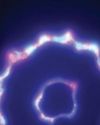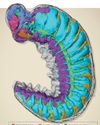
Areas of Manhattan, Long Island, and New Jersey were submerged in debris as the superstorm wreaked havoc on infrastructure and power lines. Electricity went down for thousands of homes as the autumn temperature dipped, causing inhabitants to scramble for gas to power their generators.
Gasoline is the primary fuel used by most single-fuel generators, becoming a hot commodity in times of power outages. In the case of Sandy, it was rationed to just five gallons per car, with some stations banning the filling of gas cans. Long lines mounted overnight as people slept in their cars or on the street just to fill up. Meanwhile, older mom-and-pop stations had gas but were unable to serve it without any electric pump backups. Even six months after Sandy made landfall, the region was still feeling the storm's effects. The hurricane, which disrupted one of the biggest supply chains in the world and affected America's most populated metropolitan area, highlighted just how reliant people are on this one type of fuel in an emergency.
Just 20 percent of U.S. households own a generator to run their appliances when power goes out, predominantly on coastlines vulnerable to hurricanes. Only about 5 percent of those generators are the permanent standby kind used to power an entire home. Since standbys can be overkill for many households, most generators are portable models of different sizes that primarily use gasoline to power appliances. But gas is expensive, goes bad if left untreated for more than three to six months due to ethanol breakdown, and can potentially evaporate. Certain generators can run off of other sources, though. Of them, propane remains stable when stored and produces less harmful emissions but can't reach the same British thermal unit and therefore requires more to produce the same energy as gasoline. Natural gas is often the cheaper and more reliable option and can be supplied on demand from pipes in homes that have hookups.
This story is from the {{IssueName}} edition of {{MagazineName}}.
Start your 7-day Magzter GOLD free trial to access thousands of curated premium stories, and 9,000+ magazines and newspapers.
Already a subscriber ? Sign In
This story is from the {{IssueName}} edition of {{MagazineName}}.
Start your 7-day Magzter GOLD free trial to access thousands of curated premium stories, and 9,000+ magazines and newspapers.
Already a subscriber? Sign In

ONE OF THE 'GREATEST THREATS' TO THE PACIFIC NORTHWEST ISN'T WHAT YOU THINK.
EXPERTS ARE PREPARING THE REGION AGAINST THE THREAT OF DANGEROUS VOLCANIC MUDFLOWS, KNOWN AS LAHARS, WHICH COULD INUNDATE THE COMMUNITIES SURROUNDING MT. RAINIER IN AS LITTLE AS 30 MINUTES.

THE WORLD'S TOUGHEST ROW
They rowed 3,000 miles across the Atlantic, battling unpredictable weather, chaotic seas, and finicky equipment. But what they discovered gave them profound new insights into the power of the ocean.

HOW TO DIY OFF-GRID SOLAR
SPEND THE TIME UP FRONT AND PLAN IT CAREFULLY TO AVOID DISAPPOINTMENT

Are We on the Verge of an ARMS RACE in SPACE?
RUMORS OF A RUSSIAN SPACE NUKE, ALONG WITH OTHER SATELLITE-TARGETING WEAPONS, HAVE MADE GEOPOLITICAL TENSIONS EXTEND INTO ORBIT.

Fresh Fingerprints on an Ancient Statue
A CLAY FIGURINE HAS SPENT MILLENNIA incomplete, waiting at the bottom of a lake for its long-dead craftsman to finish the Iron Age-era statuette.

Quantum Entanglement in Our Brains
IT HAS LONG BEEN ARGUED THAT THE human brain is similar to a computer. But in reality, that's selling the brain pretty short.

The Tools of Copernicus
WAY BACK IN 1508, WITH ONLY LIMited tools at his disposal, Nicolaus Copernicus developed a celestial model of a heliocentric planetary system, which he described in hist landmark work De revolutionibus orbium coelestium. It was a complete overhaul of our conception of the universe-one that, unfortunately, earned him the ire of the Catholic church for decades after his death-and forever changed the way we look at the stars.

Building a Sixth-Generation Bomber Raptor
THE GLOBAL COMBAT AIR Programme (GCAP)-a project by the U.K., Italy, and Japan to develop a sixth-generation stealth fighter-has been busy at the drawing board reshaping its vision of the future of air warfare. And judging by the new concept model unveiled at this year's Farnborough air show, that future has big triangular wings.

The Electroweak Force of the Early Universe
TODAY, THE UNIVERSE AS WE KNOW IT IS governed by four fundamental forces: the strong nuclear force, the weak nuclear force, electromagnetism, and gravity.

This Ancient Fossil With a Brain and Guts
WE KNOW WHAT FOSSILS LOOK like. For example, typical dinosaur fossils are bones turned to stone and preserved from the passage of time, located, if we're particularly lucky, in large collections that can be reassembled to represent the beast they used to prop up in their entirety.